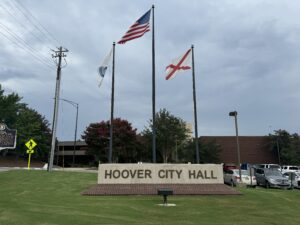Alabama red snapper season closes Sunday, 6 weeks early
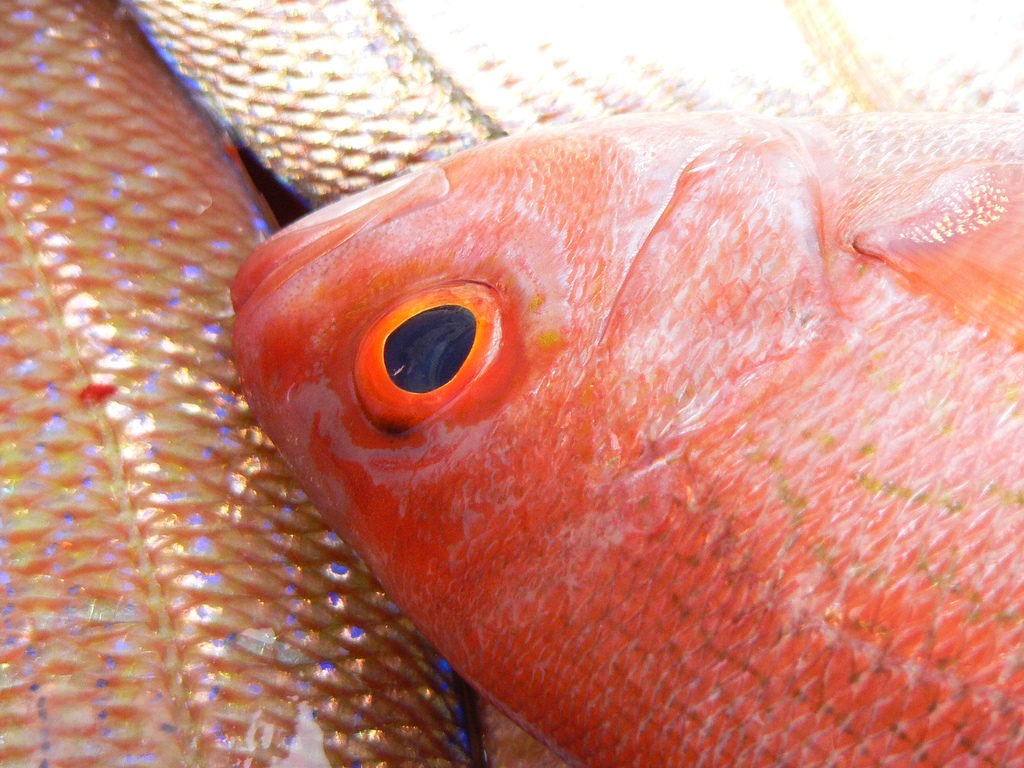
After its first season of self-managing red snapper fishing, the Alabama Department of Conservation and Natural Resources (ADCNR) is bringing the season to an end six weeks earlier than expected. The Marine Resources Division (MRD) of the ADCNR made the announcement last week that the season to harvest red snapper by private anglers and state-licensed commercial party boats will come to an end on 11:59 p.m. Sunday, July 22, 2018 due to the fact the quota of 984,291 pounds issued under the National Oceanic and Atmospheric Administration’s (NOAA) National Marine Fisheries’ Alabama Recreational Red Snapper Exempted Fishing Permit (EFP) is expected to be met by the closure date. The season was originally scheduled to run through Labor Day, September 3. “Alabama anglers fished extremely hard on the good weather days during the season,” said Marine Resources Director Scott Bannon. “That level of effort, coupled with larger average-sized fish harvested this year as compared to last year, resulted in a daily harvest rate two times higher than 2017, which prompted an earlier than anticipated closure. “The purpose of the EFP was to demonstrate Alabama’s ability to establish a season and monitor landings within a fixed quota and I think we have shown we can do that,” said Bannon. The state-managed season was made possible through language authored by U.S. Senator Richard Shelby in the FY2017 Commerce, Justice, and Science Appropriations bill that directed the NOAA Fisheries to develop the fishery management pilot program allowing states to direct reef fish management activities. Anglers are reminded of the following: Possession of red snapper in Alabama waters while state waters are closed is prohibited regardless of where the fish were harvested. Alabama anglers may fish in federal waters off the coast of Alabama (outside of 9 nm) and land in a state that is open to the landing of red snapper, but they must adhere to the open state’s rules and not transit in Alabama state waters with red snapper on board. The season for federally-permitted charter for-hire vessels will close at 12:01 a.m. July 22. In-season landings estimates were calculated through the use of Snapper Check, the program established in 2014 to collect mandatory trip reports from anglers, and this monitoring tool was a key component of the EFP. MRD staff will review the complete 2018 season effort and landings data to develop a plan for the 2019 season. Summary data from the season and information about the EFP can been found online here.
Bradley Byrne: Protecting a Gulf Coast tradition
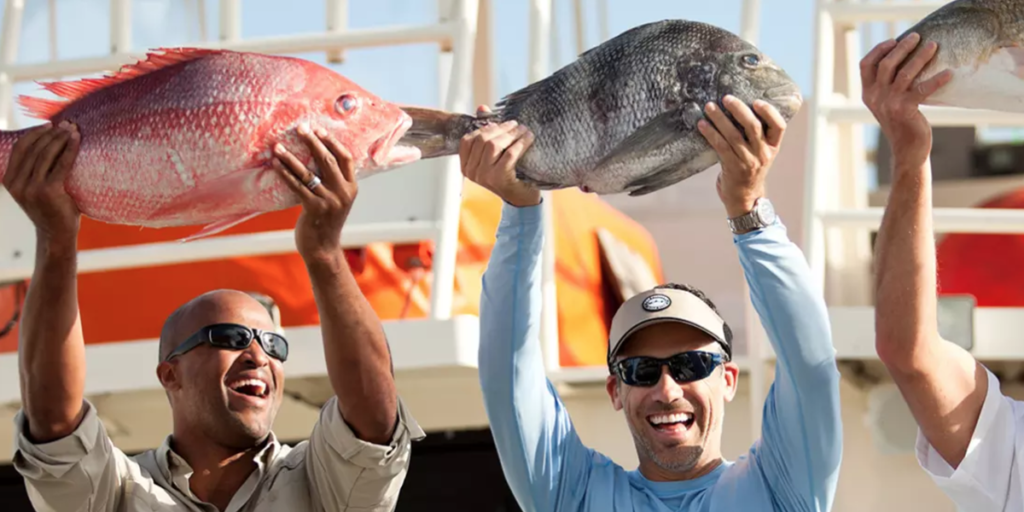
Down here on the Gulf Coast, fishing is a way of life for many people. It is a tradition that spans generations and is one way we bond with our family and friends. In fact, some of my fondest memories happened while casting a reel. I remember my father showing me how to bait a hook and teaching me about the patience of waiting for a bite. I enjoy carrying on that tradition with my kids. Just in time to celebrate National Fishing and Boating Week, Alabama’s 2018 Red Snapper season officially opened on June 1st. The Red Snapper season is a real boon for our coastal communities, and the impact is felt all throughout Southwest Alabama. The economic impact flows to everything from gas stations to restaurants to hotels. Unfortunately, in seasons past, Alabama has felt the full force of Washington when it comes to regulating our recreational fishing. These regulations are based on junk science, yet have a huge impact on when we can and cannot fish. Anyone who has been fishing in the Gulf over the last few years knows there are more than enough Red Snapper in our waters, and Washington’s methods of stock assessments are sorely out of touch with what is happening. When it comes down to it, no one understands the needs of our fisheries better than those who cast a reel along the Gulf Coast. The federal bureaucrats in Washington have no business controlling our fisheries when those of us on the coast know what is best for our fishermen. That’s why, earlier this year, I wrote to the National Marine Fisheries Service to advocate for Alabama’s application for an Exempted Fishing Permit (EFP), which would allow the state to set our own season for the next two years. I was pleased when this EFP was granted by the Department of Commerce on April 20, 2018, securing Alabama’s 47-day Snapper season for the 2018 and 2019 seasons. Specifically, the 2018 Red Snapper season in Alabama will run from June 1 through September 3, with Fridays, Saturdays, and Sundays open to fishing. The entire week of the Fourth of July (June 30 through July 8) will also be open for Red Snapper fishing. You see, this is how government should work: take power from Washington and return it to the people who best understand the issue. I am proud to have helped secure a lengthy Snapper season, which means our fishermen will have adequate time to enjoy a Gulf Coast tradition while our coastal communities will benefit from increased revenue. It is truly a win-win situation for coastal Alabama. Of course, there were many people who had a hand in securing an adequate season for our fishermen. I thank Senator Richard Shelby for his support and his work to secure the language for the EFP in last year’s appropriations bill. I also appreciate the Gulf Council for their support of the exempted fishing permit pilot program and Alabama Department of Conservation and Natural Resources Commissioner Chris Blankenship and our other Gulf Coast colleagues for working together to support our fishermen. Ultimately, it was a total team effort to make this 47-day Snapper season a reality. This is a real victory for all our recreational fishermen as well as our coastal region. As I have always said, this issue is about so much for than just our fishermen; the Red Snapper season impacts our entire costal community, and I look forward to a safe and fun season. • • • Bradley Byrne is a member of U.S. Congress representing Alabama’s 1st Congressional District.
Recreational red snapper season opens Friday, June 1
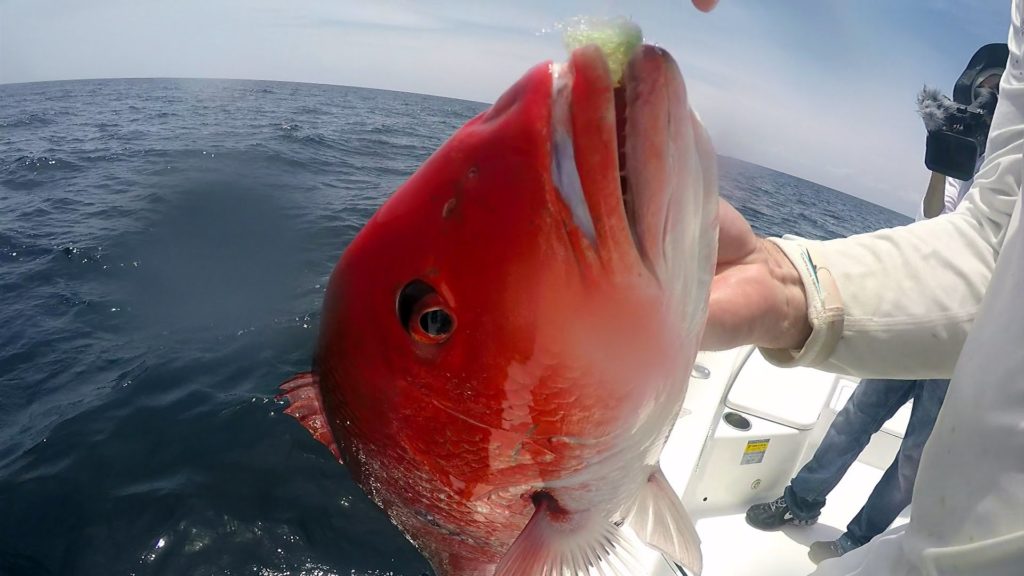
At long last, the days of federal mismanagement of red snapper fishing will soon be over. Starting next Friday, June 1, the 2018 red snapper season in Alabama will begin under the management of the Alabama Department of Conservation and Natural Resources. The state-managed season was made possible through language authored by U.S. Senator Richard Shelby in the FY2017 Commerce, Justice, and Science Appropriations bill that directed the National Oceanic and Atmospheric Administration’s (NOAA) National Marine Fisheries Service to develop the fishery management pilot program allowing states to direct reef fish management activities. It will run through September 3, with Fridays, Saturdays, and Sundays open to fishing. The entire week of the Fourth of July (June 30 through July 8) will also be open for red snapper fishing. Red snapper landings will also be allowed July 2-5 and Labor Day. The bag limit will remain two per person with a 16-inch minimum length. Under the pilot program, private recreational anglers will each be responsible for monitoring landings so they do not exceed their portion. Alabama will use Snapper Check to monitor its landings and determine if: the season will close as anticipated; the season will close earlier than anticipated due to daily landings exceeding forecasted totals; or the original season length should be increased if daily landings do not meet anticipated levels (i.e. due to smaller fish size or inclement weather).
Alabama submits request to NOAA to manage Red Snapper seasons

Recreational fishermen across the Gulf of Mexico and the East Coast, rejoice — the days of federal mismanagement of red snapper fishing may soon be over. The Alabama Department of Conservation and Natural Resources on Wednesday announced the Gulf States — Florida, Alabama, Mississippi, Louisiana and Texas — have banded together to submit proposals for an alternative style of red snapper management for private and state charter vessel anglers during 2018 and 2019. If approved by NOAA Fisheries, each state would have the ability to establish fishing season start and end dates in federal waters off their respective state’s coast. Under the proposals, each state has requested a portion of the total allowable catch for private recreational anglers in the Gulf and they would each be responsible for monitoring landings so they do not exceed their portion. Alabama will use Snapper Check to monitor its landings and determine if: the season will close as anticipated; the season will close earlier than anticipated due to daily landings exceeding forecasted totals; or the original season length should be increased if daily landings do not meet anticipated levels (i.e. due to smaller fish size or inclement weather). Alabama’s proposal has state and federal waters opening for weekends only (Friday–Sunday) from June 1 through September 3 (Labor Day). The season would also include the entire week of Independence Day, June 30- July 8. These specific proposals are referred to as Exempted Fishing Permits. They will be reviewed by NOAA Fisheries and state representatives on Wednesday, Jan. 31 during the Gulf of Mexico Fishery Management Council meeting in New Orleans. Alabama State Auditor Jim Zeigler belives the new proposal is better than last year’s. “While we are not quite there yet, this plan is light years better than the short seasons we suffered. My ultimate goal is to end federal regulation and allow Alabama to regulate our own fisheries,” said Zeigler, an angler himself, living in Mobile, Ala. The season for anglers planning on fishing from a federally-permitted charter vessel this year will begin June 1 and end sometime in late July. The season will be announced by NOAA Fisheries in the coming months.
Bradley Byrne: A red snapper victory

We recently had a major victory for our area’s Red Snapper fishermen and the coastal communities, which benefit from a longer Red Snapper season. Last Wednesday, the federal Department of Commerce announced an emergency extension of the 2017 Red Snapper season for recreational fishermen. As you probably remember, it was announced by the National Oceanic and Atmospheric Administration earlier this year that the Red Snapper season would be just three days, the shortest season ever. Under the emergency extension, the season for recreational fishermen now includes Fridays, Saturdays, and Sundays between now and Labor Day. The season will also include July 3rd and 4th and Labor Day. This adds up to an overall extension of 39 days. As soon as the three day season was announced, my staff and I went to work to on an extension. We partnered with other Gulf Coast congressmen in sending a letter to the Department of Commerce requesting an extension, and then worked with the Department and the Gulf states to iron out the details. Many people helped make this extension possible, and they deserve to be acknowledged. I appreciate President Donald Trump and Commerce Secretary Wilbur Ross for paying attention to our concerns and working to address this issue. The staff at the Department of Commerce was easy to work with as we put this extension together. I also cannot say enough about the help from Chris Blankenship, the acting commissioner of the Alabama Department of Conservation and Natural Resources. Chris has always been a joy to work with on Red Snapper issues, and he played a critical role in helping get the other Gulf states on board with this agreement. I also want to thank the local and state officials, as well as the grassroots supporters and fishermen, who helped bring attention to this issue. I firmly believe your efforts made a difference. One of the other people who played a critical role in making this agreement a reality was House Majority Whip Steve Scalise from Louisiana. Congressman Scalise expected to make news on Wednesday morning talking about the Red Snapper news, but he unfortunately made national headlines for a different reason. He was one of the individuals tragically shot during a practice for the Congressional Baseball Game. Steve Scalise is a wonderful man, a personal friend, and a true advocate for the Gulf Coast. I hope you will join me in continuing to pray for Steve and his family as he goes through the recovery process. Ultimately, it was a total team effort to make this emergency extension a reality. This is a real victory for all our recreational fishermen as well as our coastal communities. All this said, the extension only applies to the 2017 season. We must continue our efforts to find a permanent legislative solution that gives more authority over setting Red Snapper seasons to the five Gulf states. Discussions are ongoing between my office and other Gulf Coast congressmen in the House on legislation to address the issue, but we also need a willing partner in the Senate to help push our Red Snapper reforms in that body. As I have said before, I am not giving up on this issue until we get a solution. Not only is it critically important to our fishermen and the economies in our coastal communities, but it is also a shining example of the kind of government overreach and incompetence that has become all too common in today’s federal government. I encourage all our fishermen to enjoy the extended 2017 Red Snapper season, but to join me in not letting up the pressure as we work toward a permanent solution. • • • Bradley Byrne is a member of U.S. Congress representing Alabama’s 1st Congressional District.
Bradley Byrne, Gulf colleagues ask Trump Administration for longer red snapper season
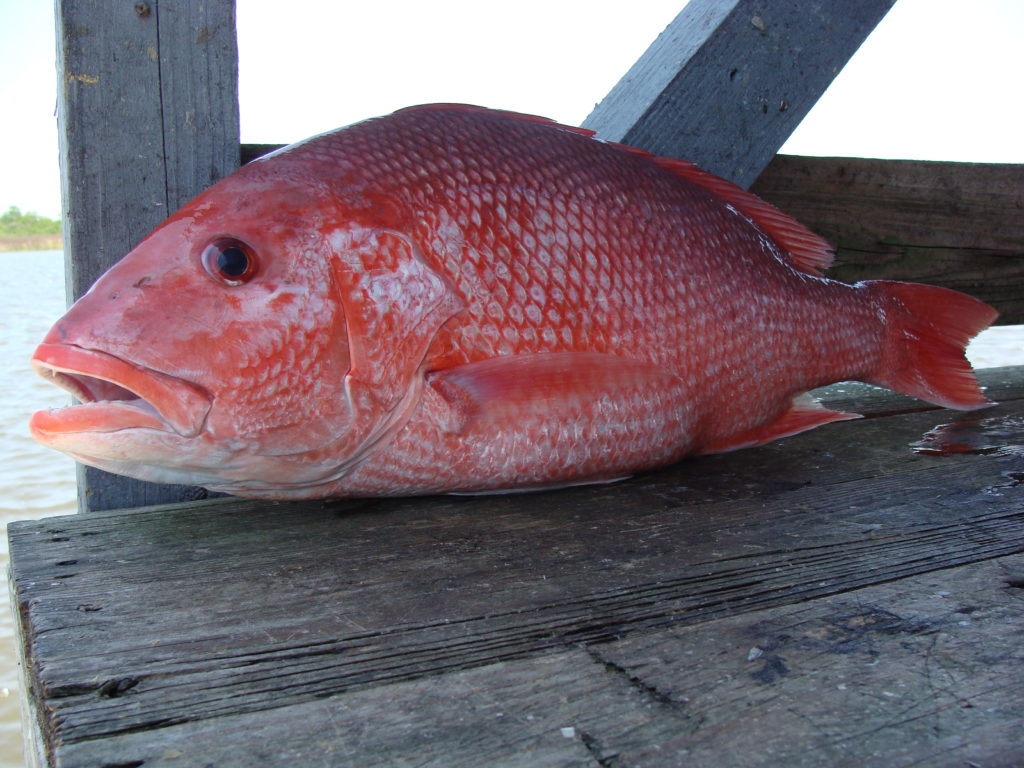
Members of the U.S. House of Representatives aren’t giving up on their fight to extend the number of days for the 2017 red snapper season in federal waters. On Monday, Alabama 1st District U.S. Rep. Bradley Byrne, along with four other Members of Congress representing districts on the Gulf Coast, sent a letter to Secretary of Commerce Wilbur Ross urging him to extend the number of days. Currently, the season is scheduled to run from June 1-3, making it the shortest red snapper season ever in the Gulf of Mexico. “A three day red snapper season is simply not acceptable, especially given how many red snapper there are in the Gulf right now. Anyone who knows anything about Gulf Coast fisheries would agree that the red snapper fishery is incredibly healthy,” Byrne said of his request. “By bringing other Gulf Coast Congressmen together, I am hopeful we can get the Trump Administrative and Secretary Ross to provide some relief for our recreational fishermen ahead of the 2017 federal season.” In asking for a longer season, the Gulf Coast congressmen — Louisiana-Republican Garrett Graves, Texas-Republicans Randy Weber and John Carter, and Mississippi-Republican Steven Palazzo — pointed to the inaccurate data the National Marine Fisheries Service used to set the 2017 data. “Our recreational fishermen are being penalized by NOAA for a statistical anomaly,” the letter stated. “Currently, NOAA’s data says that recreational fishermen exceeded last year’s quota by 129,906 pounds. However, 129,000 pounds represents less than .02 percent of the recreational quota.” Read the full text of the letter below: Dear Secretary Ross, We write today to express our disappointment in the recent announcement from the National Marine Fisheries Service (NMFS) of a three day recreational Red Snapper season. It is unacceptable. We ask that you reevaluate this decision and extend the number of days for the 2017 season. On March 21st, we wrote to you about the importance of access to adequate fishing resources in the Gulf of Mexico, and namely Red Snapper. You responded that the Red Snapper fishery is a high priority for you and your department, and therefore it is time for more than three days. Our recreational fishermen are being penalized by NOAA for a statistical anomaly. Currently, NOAA’s data says that recreational fishermen exceeded last year’s quota by 129,906 pounds. However, 129,000 pounds represents less than .02 percent of the recreational quota. This decision has no bearing on the health of the stock, and there is no chance NOAA is representing the number with any degree of accuracy. At the state level, we continue to see report numbers that do not match NMFS’s data, caused by the lack of real-time information. For example, in Alabama, preliminary estimates for 2016 show a total of approximately 821,000 pounds counted by Alabama’s Snapper Check Program. NOAA’s estimates for the same time show approximately 2 million pounds accounted for. Mississippi’s data shows the opposite problem. According to data from Mississippi’s Tails n’ Scales Program, almost 40,000 pounds were accounted for, yet NOAA’s data claims there were zero pounds taken. It is time for recreational anglers to stop being penalized for NOAA’s bad science and lack of coordination. In short, there is serious doubt that federal data is accurately reflecting the number of Red Snapper in the Gulf. For that reason, we feel revaluating your agency’s decision for the 2017 season is warranted, and we urge you to continue working with us to develop a long-term solution to address these issues impacting our recreational fishermen and coastal communities. Thank you for your attention to this matter. We look forward to hearing from you.
Bradley Byrne: Fight continues for longer red snapper season
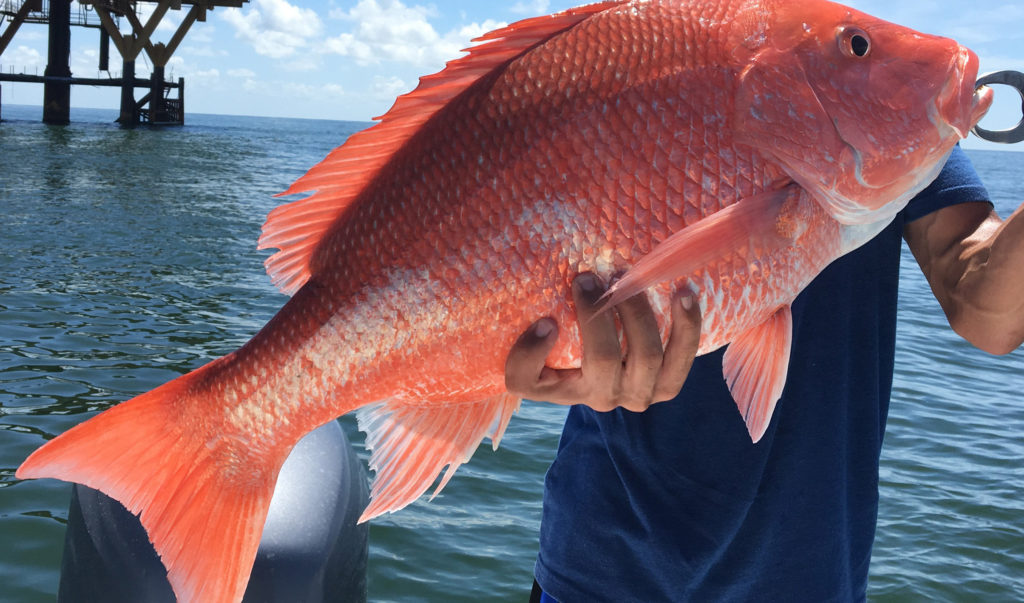
We are blessed to live in a part of the world known for our beautiful scenery, abundant natural resources, and marvelous waterways. It is easy to see why my family has not left Southwest Alabama since my great, great, great grandfather settled here in the 1780s. A critical part of our local culture is the Gulf of Mexico, including a wide range of fish that call the Gulf home. Like so many others, my family has gone fishing in the Gulf for as long as I can remember. Given how important fishing is to so many, I was incredibly frustrated to learn that this year’s Red Snapper season in federal waters will only be three days. That is simply not acceptable and a further indication of how poorly the federal government is managing the Red Snapper fishery. During a recent House Oversight Committee hearing on Red Snapper, I pointed out that preliminary estimates done by the state for 2016 show a total of approximately 821 thousand pounds of Red Snapper caught in waters off of the Alabama coast. Federal estimates for the same time show approximately 2 million pounds accounted for. Mississippi’s data shows the opposite problem. According to data from Mississippi’s Tails n’ Scales Program, almost 40,000 pounds were accounted for, yet federal data claims there were zero pounds. The system is completely broken. Since being elected to Congress, I have made Red Snapper a top priority. We passed a bill out of the House in 2015 that would have repealed the quota system and given the Gulf states control over the data collection and stock assessments. I personally wrote and championed these provisions with the support of other Gulf Coast colleagues. While we succeeded in getting the bill out of the House, I was very disappointed the Senate failed to even take up the bill. I want to be clear: Red Snapper is not an issue that just comes up once a year in my office. In fact, we work year round to increase awareness, build support, and push for a permanent solution. We are utilizing a strategy focused on both an administrative and legislative solution. First, I am hopeful that under President Donald Trump we can get some relief. President Trump is a big believer in rolling back regulations and getting the government out of the way. There is no better example of big government micromanagement and failure than the Red Snapper issue. With a new director of the National Oceanic and Atmospheric Administration (NOAA), which oversees the National Marine Fisheries Service, I hope we can get back to longer seasons, more local data, and a balanced system that actually works. Second, I am going to continue working with my Gulf Coast colleagues on legislation to fix the system and get us longer seasons for recreational fishermen. Discussions are actively ongoing about a legislative solution that tackles this issue head on and gives more control to the individual Gulf states. We did receive a bit of good news. With the help of Senator Richard Shelby, we were able to secure a permanent expansion of state waters out to nine miles Gulf-wide. In the past, some Gulf states had state waters out to nine miles while others, like Alabama, only had three miles of state waters. Permanently expanding the state waters to nine miles for Red Snapper will provide parity among the Gulf states and give important certainty to our fishermen as they work to further build up the artificial reef system in state waters. The fight for a longer Red Snapper season continues, and I am more emboldened than ever before to get us a solution. • • • Bradley Byrne is a member of U.S. Congress representing Alabama’s 1st Congressional District.
Bradley Byrne urges continuation of nine mile state waters for red snapper

In December 2015, the federal government passed its annual omnibus spending bill, which included a provision to extend Alabama’s state waters from three nautical miles to nine nautical miles for 2016. The move aligned the state waters of Alabama, Mississippi and Louisiana with the state waters for Florida and Texas. On Tuesday, Alabama 1st District U.S. Congressman Bradley Byrne announced he recently sent a letter to the House Appropriations Committee urging the Committee to once again include a provision in the government funding bill to expand state waters in the Gulf of Mexico to nine miles for Red Snapper fishing. The language in the previous budget made the nine-mile extension valid through Fiscal year 2016, which ended September 30, 2016, requiring an extension to be valid in the 2017 fishing season. “As we prepare for the upcoming Red Snapper season, it is critically important that state waters remain out to nine miles,” explained Byrne. “Changing this provision just weeks before the season starts would create unnecessary uncertainty and confusion for our local fishermen.” Congressman Byrne continues to advocate for a long-term solution that gives more control over Red Snapper to the individual Gulf states instead of to the federal government. By giving states control over the data collection and stock assessments, Byrne believes we can get back to a full season again. He continued, “This solution alone is not enough to fix the larger Red Snapper issue, but continuing to have state waters out to nine miles is an important step in the right direction. I will continue working with my Gulf Coast colleagues to advance commonsense legislation that fixes this issue once and for all.” The full text of Byrne’s letter to the Appropriations Committee can be found below. Dear Chairman Culberson: As you and the Committee draft a funding bill for the remainder of Fiscal Year 2017, I urge you to include language from previous appropriations bills that extends the boundaries of state waters in the Gulf of Mexico to nine nautical miles for Red Snapper fishing. There continues to be serious concerns about the ability of the federal government to adequately manage the Red Snapper fishery in the Gulf. Efforts remain under way to find a long-term legislative solution to improve the way we gather data and information on the Red Snapper population and landings. These efforts also include a permanent extension of state waters out to nine nautical miles for Red Snapper fishing, which would bring parity to all the Gulf states. While these efforts continue, it is vitally important the Committee once again include a provision allowing for state waters to be extended. Without the inclusion of this provision, there would be great uncertainty among fishermen and access to the abundant Red Snapper fishery would be further reduced. Red Snapper fishing is about more than just the fishermen. The issue is of critical importance for the economies of coastal communities all along the Gulf Coast, including communities in my district. Ultimately, I urge the Committee to once again include this provision in any Appropriations bill as we continue working toward a permanent, long-term solution. I appreciate your attention to this critical issue.

